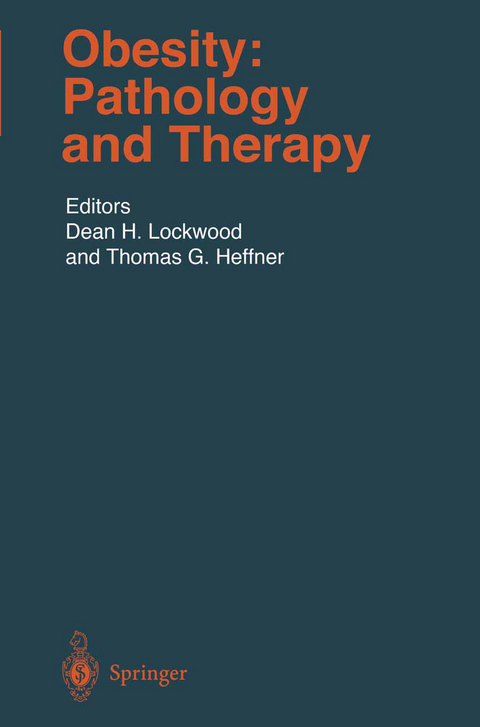
Obesity: Pathology and Therapy
Springer Berlin (Verlag)
978-3-642-64070-4 (ISBN)
Obesity is a serious medical problem that affects millions of people, especially in Western societies. Although long considered a complicating factor in a variety of diseases, there is now widespread agreement that obesity itself should be classified and treated as a disease and that it has important conse quences for personal health, quality of life and cost to society. Understanding obesity and the means of treating it have been hampered in the past. There have been misperceptions that obesity is a behavioral disorder and that its treatments provides only cosmetic benefits. Pharmacologic approaches to treatment have suffered from problems of limited efficacy, reduced activity upon chronic use, and serious side effects, including abuse liability, cardiac disease, hypertension, and respiratory complications. Finally, there has been a proliferation of consumer and natural products with unproven benefits. This book attempts to address both the problems associated with obesity and the approaches to treating it. In the first section devoted to pathology, Drs. DIGIROLAMO, HARP, and STEVENS elaborate in Chap. 1 on how obesity and its medical complications develop. As described by Dr. PI-SUNYER in Chap. 2, obesity is a disease seen most often in affluent Western societies and is associated with the aforemen tioned medical problems, as well as Type II diabetes mellitus and gallbladder disease. Drs. CHAGNON, PERUSSE, and BOUCHARD review the human genetics of obesity in Chap. 3, and Drs.
Section I: Pathology.- 1: Obesity: Definition and Epidemiology.- 2: Health Implications of Obesity.- 3: The Molecular and Epidemiological Genetics of Obesity.- 4: The Influence of Obesity on the Development of Non-Insulin-Dependent Diabetes Mellitus.- 5: Fat Metabolism in Obesity, with Special Emphasis on the Insulin Resistance and Elevated Lipid Mobilisation in Visceral Obesity.- 6: The Regulation of Body Weight: Set-Points and Obesity.- Section II: Pharmacological and Other Treatments.- 7: Serotonin Drugs and the Treatment of Obesity.- 8: Pharmacological Treatment of Obesity: Outcomes and New Tools.- 9: Popular Diets and Other Treatments of Obesity.- 10: Diet and Body Weight Reduction.- 11: The Surgical Treatment of Morbid Obesity.- Section III: Pharmacological Targets.- 12: Leptin: The Adipocyte Signal in the Control of Body Weight.- 13 Central Nervous System Neuropeptides Involved in Obesity.- 14: ?3 Adrenergic Receptors as a Therapeutic Target for Obesity.- 15: Insulin Sensitization.- Section IV: Strategies for Identifying Future Targets.- 16: New Obesity Targets: Molecular-Genetic and Transgenic Approaches.- 17: Identification of Genes Involved in Animal Models of Obesity.- 18: Primates in the Experimental Pharmacology of Obesity.
| Erscheint lt. Verlag | 5.10.2011 |
|---|---|
| Reihe/Serie | Handbook of Experimental Pharmacology |
| Zusatzinfo | XXIV, 503 p. 2 illus. in color. |
| Verlagsort | Berlin |
| Sprache | englisch |
| Maße | 155 x 235 mm |
| Gewicht | 787 g |
| Themenwelt | Medizinische Fachgebiete ► Innere Medizin ► Endokrinologie |
| Medizin / Pharmazie ► Medizinische Fachgebiete ► Pharmakologie / Pharmakotherapie | |
| Medizin / Pharmazie ► Pharmazie | |
| Studium ► 1. Studienabschnitt (Vorklinik) ► Physiologie | |
| Schlagworte | CNS • Diabetes • Diabetes mellitus • Fettleibigkeit • Insulin • insulin resistance • Lipide • Metabolism • Neuropeptides • Obesity • Pathologie • Pathology • pharmacology • Research • resistance • Serotonin • Therapie • therapy |
| ISBN-10 | 3-642-64070-2 / 3642640702 |
| ISBN-13 | 978-3-642-64070-4 / 9783642640704 |
| Zustand | Neuware |
| Haben Sie eine Frage zum Produkt? |
aus dem Bereich


